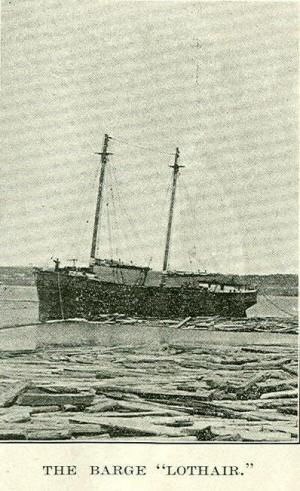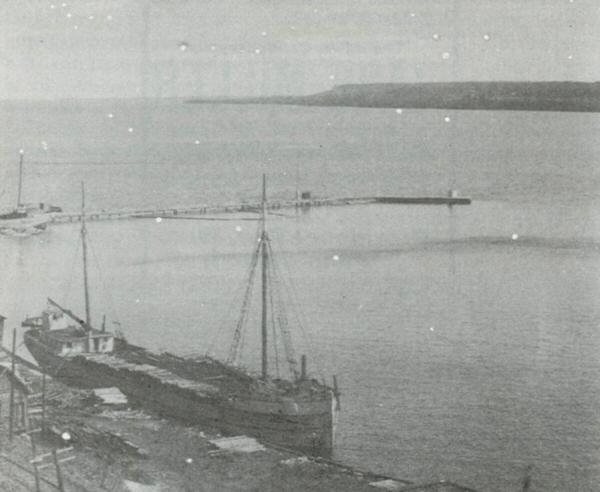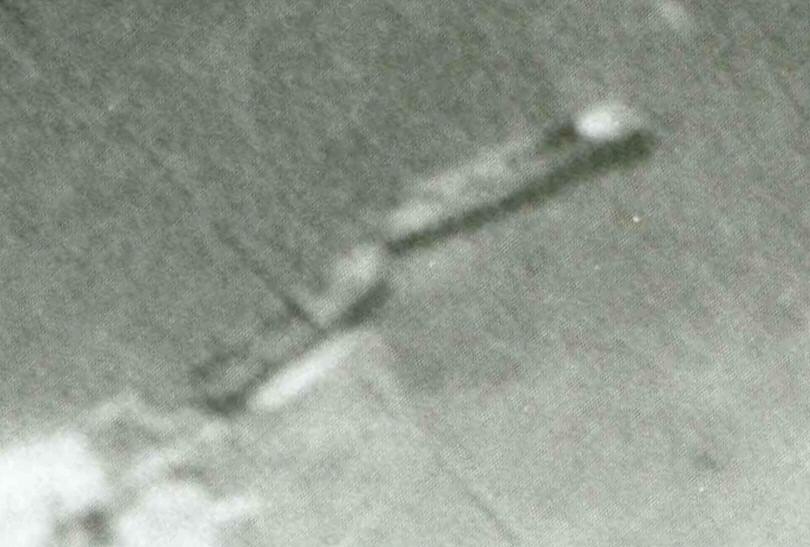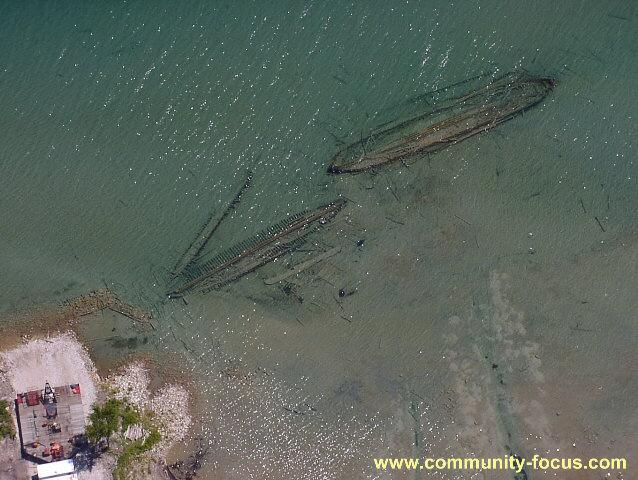- Recent Updates
- Colpoy's Bay
- Colpoy's Bay Introduction
- Spragge's Hill
- The Kalbfleisch House
- The Kalbfleisch Dock
- The Kalbfleisch Marina
- Whicher's Sawmill
- The Wrecks Near Whicher's Mill
- Frame's Falls and John Wood's Grist Mill
- Albemarle Street
- Hughenden and Whicher's Store
- The Community Hall
- The Forest Home Hotel
- The Colpoy's Bay Schoolhouse
- The Colpoy's Bay Church
- Edgehill Cemetery
- Colpoy's Bay From the Air
- A Glimpse of the Past
- Wiarton
- Berford Street
- Berford St. Part 2
- Berford St. Part 3
- Wiarton Harbour
- Bluewater Beach
- Caframo Ltd. and Wiarton Cement Works
- Wiarton Beet Sugar Factory
- Wiarton's Hotels
- Wiarton's Schools
- Wiarton's Banks
- Grand Trunk Railway Station
- The Wiarton Fish House
- The Wiarton Fish Hatchery
- Wiarton's Berford Theatre
- The Wiarton Woolen Mills
- Wiarton's Furniture Industry
- Wiarton's Hospital
- Wiarton's War Memorial
- Wiarton's Town Hall
- Wiarton's Newspapers
- Wiarton's Grist & Flour Mills
- Wiarton's Sawmill Industry
- Wiarton's Gateway
- Connecting Passages
(Links) - Present-day Map
of Colpoy's Bay - Colpoy's Bay
Lot Map (1870) 
Wiarton Timeline- Present-day Map
of Wiarton - Bibliography
- About the Author
- Site Map
(use if menu doesn't work) - Tell me your impressions!
The Wrecks Near Whicher's Mill
Although the old
scows sunken to form the Kalbfleisch Marina are the most obviously visible
wrecks off the shores of Colpoy's Bay Village, there are two other barges,
the Lothair and Edward S. Pease, located only meters away
that are significantly older. Sunken in the shallow waters next to
Whicher's Mill, these former steamships ended their days breaking the waves,
forming a Mill Pond. As a youngster, I recall seeing portions of
these barges protruding from the water, but annual ice flows and high water
levels hid the wrecks completely beneath the waves by the 1990s.
 |
 |
Both ships were wooden hulled and originally driven by steam-powered single propellors. However, like most ships of their time, they also still featured sails on their main and foremasts.
The Lothair, the smaller of the two ships, was built in 1872 at Hamilton, Ontario measuring 129 feet long and weighing 351 gross tonnes. Originally a great lakes freighter, the Lothair served this purpose for a total of 21 years, but not without incident. On November 2, 1874 the ship apparently ran agound at Amherst Island, Lake Ontario in bad weather, bound from Oswego, NY, for Trenton, Ont. The damage was estimated at $1,000 (over $20 000 today). Undergoing a rebuild in 1877, her weight was increased to 413 gross tonnes. Two years later, on June 3, 1879, it seems she became stranded on the breakwater at Collingwood, Ontario, bound from Chicago for that port. This time damage was estimated at $200 (about $5000 today). After twelve years of seemingly uneventful service, she mysteriously took on water under fair weather and became waterlogged near Tobermory, Ontario. Her deckload of lumber and all deckhouses were washed clean off. Were it not for her interior cargo of lumber, she would have reportedly sunk. Subsequently, she was towed to Windsor for an estimated $1900 (about $40 000 today) in repairs, but the following January 2 (of 1893), she burned in that port. Upon her purchase by the Crawford Tug Company of Wiarton in May of 1898 for use in the local lumber trade, the Lothair was still described as a schooner. However, at some point thereafter, she appears to have outlived her usefulness as a freighter and was converted into a barge (see the left image in Figure 6A). (A few more details on the career of the Lothair are available from the Great Lakes Vessels Index).
The story of the Edward S. Pease is similar, although more tragic. Like the Lothair, she was built in Hamilton as a steamdriven freighter in 1873. Originally, the ship's name was California and she measured 137 feet long and 667 gross tonnes in weight. As the California, she went through one rebuild in 1883 when her gross tonnage was upped to 901. In June of the following year she became beached near Sand Beach, Michigan before being refloated. Tragedy struck four years later when, on October 3, 1887, a fierce storm forced the ship aground at St. Helena Island, Lake Michigan, while she was trying to make the west entrance to the Straits of Mackinac. The California had been bound from Chicago to Montreal with a cargo of corn and pork, three passengers, and twenty two crew. The storm ravaged the ship, washing all cabins off the deck. Nine of crewmen were killed. It wasn't until July 20 of the following year that the ship was refloated and towed to Detroit. (Interestingly, the cargo of corn was still sold, having only suffered water damage on the bottom 13 inches of the shipment.) The rebuild was done in Bay City, Michigan, reducing the gross tonnage to 542 and changing the name to the Edward S. Pease. Trouble stalked the ship, however, and on her maiden voyage as the Pease she capsized and sank off AuSable, Michigan in June of 1889. The ship was raised and put back into service once again. Tragedy struck again, however, on December 1, 1891 when the ship caught fire while at dock in Cleveland. Of the three people on board at the time, one escaped, one disappeared and the other jumped overboard and sadly drowned. Records then suggest that her gross tonnage had increased further to 715 by 1893 before dropping down to 574 ten years later.
Circumstances caused the Edward S. Pease and the Crawford Tug Co. of Wiarton to first cross paths in October of 1904 when the ship ran aground on Middle Beach off Tobermory, Ontario. Crawford Tug was hired to refloat the E.S. Pease. She returned to service only to catch fire on November 24 while unloading her cargo in Collingwood, Ontario. She was burned to a shell, but her hull was salvaged and reconstructed as a barge.
During this time, however, the barge's owners had withheld the $800 payment owing to the Crawford Tug Co. for refloating the ship the previous October. As a result, Crawford Tug seized the E.S. Pease in late April 1905 and took the matter to court. In early May 1905, Crawford Tug won their case, allowing them to keep the barge and collect $350 plus court costs. The rightmost image of Figure 6A shows what is likely the Pease (or a ship that looks remarkably similar) at port in Wiarton while in service for Crawford Tug.
It appears that Crawford Tug made use of the E.S. Pease for a little under two years. A news article dated August 29, 1907 tells of a fire that broke out on
board the Edward S. Pease three days previously while she was
docked in Wiarton. (The local water supply
was turned off for some reason that night and a nearby ship, The City
of Grand Rapids, used her pumps to put the fire out. Interestingly,
the City of Grand Rapids completely burned in late October that
same year in the port of Tobermory.) (A few more details on the career
of the Edward S. Pease are available from the Great Lakes Vessels Index).

Figure
6B: The Lothair (left) and Edward S. Pease (right) sunken to create
a mill pond next to Whicher's Mill (probably c. 1920s)
Having built his original sawmill at the village of Colpoy's Bay in 1901, C. E. Whicher evidently found need to shelter his location from the waves. To solve this problem, he purchased both the Lothair and Edward S. Pease from the Crawford Tug Co. for $200 (over $4500 today) each and had them purposely sunk in their current positions. As illustrated above in Figure 6B, the Lothair rests close to the shore with the Edward S. Pease right behind. The exact dates of purchase and sinking are, as yet, unclear. Evidence suggests, however, that it took place sometime around 1907. It was about that time that the assets of Crawford Tug were sold off following the disasterous sinking of their steamer the JH Jones in November of 1906 with all hands lost. It appears that CE Whicher purchased the Lothair and E.S. Pease at this time. In any event, both the Lothair and the Edward S. Pease had in all likelihood been placed in their final positions by the time Whicher's second mill began operation in 1910. Figure 6B above is a magnified view of the mill and the two ships from Spragge's Hill, likely taken in the 1920s.


Figure 6C: Two aerial views of the Lothair and Edward S. Pease with Whicher's
Mill at bottom left. (Top: 1938 - magnified; Bottom: approx. c. 2000)
The top image of Figure 6C gives a very magnified aerial view of the barges in 1939. At this point, the sides and superstructure of both vessels appear to be intact. However, sometime in the 1940s the ships rapidly disintegrated, likely due to the years of shoreline winter icepacks. Today, the keels and bottom ribs are all that remain of the Lothair and Edward S. Pease. The bottom image in Figure 6C shows a recent aerial view. (The square object a bottom left is the underwater welding training vessel now regularly "parked" where Whicher's Mill once stood.)
As a note, with water levels much lower in the early 2000s, both the Lothair and Edward S. Pease touched fresh air for the first time in many years. I was able to walk out to them several times, wading inside the skeleton of their hulls.
Approximately 132 years after they were hand built in the shipyards of Hamilton, the Lothair
and Edward S. Pease now draw regular scuba divers each summer.
Their remains stand as a testament to a local lumber industry that has
long since vanished. Having spent their twilight years of active
service handling lumber out of Wiarton, then taking their final resting places sheltering
the produce of Whicher's Mill, they are a constant reminder of how this area first flourished.
